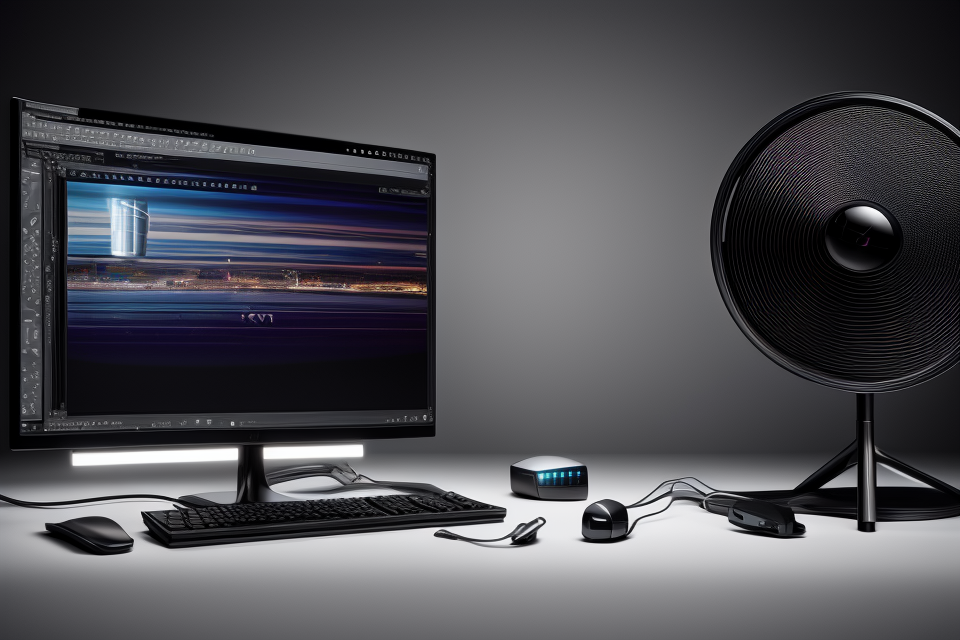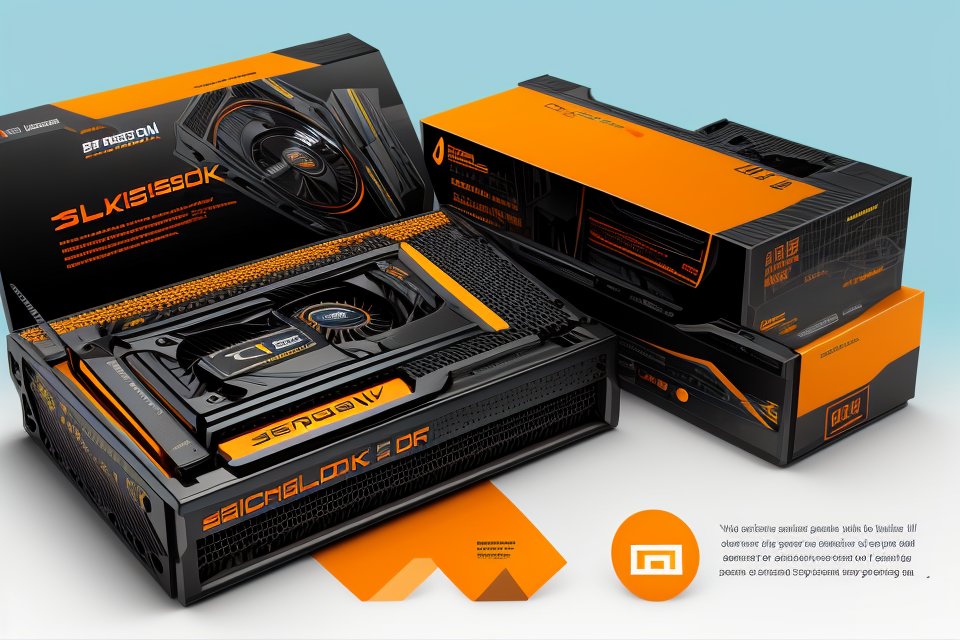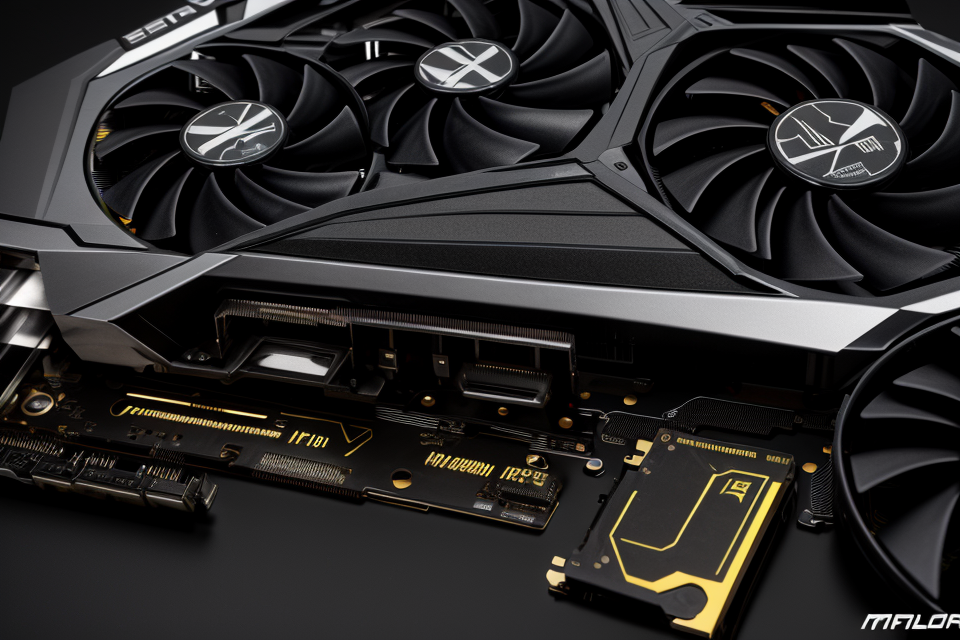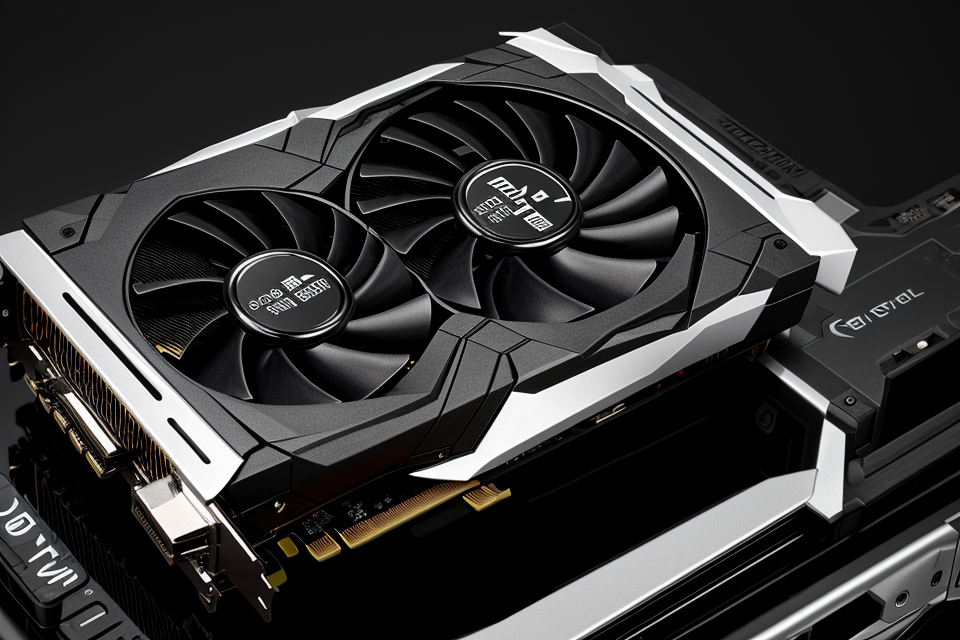
Are you a gamer looking to enhance your gaming experience? Or a content creator seeking to improve the quality of your visuals? Then you might have come across the question, “Does a graphics card improve quality?” The answer is a resounding yes! A graphics card plays a crucial role in determining the image quality of your computer-generated visuals. In this article, we will explore the impact of graphics cards on image quality and how it can take your gaming and content creation experience to the next level. So, let’s dive in and discover the secrets behind stunning visuals!
What is a Graphics Card?
A Graphics Processing Unit (GPU) Explained
A Graphics Processing Unit (GPU) is a specialized microprocessor designed to accelerate the creation and display of images and graphics in computers. It is specifically optimized for tasks such as rendering 3D models, processing video, and manipulating digital images. In contrast to a CPU, which is designed to perform a wide range of tasks, a GPU is specialized for graphics processing, allowing it to perform these tasks much more efficiently.
GPUs are designed to handle the complex mathematical calculations required for graphics rendering, including transformations, lighting, and shading. They are capable of processing large amounts of data in parallel, which allows them to render high-quality graphics at high speeds. This makes them an essential component for applications such as gaming, video editing, and 3D modeling.
In addition to their processing power, GPUs also have dedicated memory and other specialized hardware components that are optimized for graphics processing. This allows them to offload some of the work from the CPU, freeing up resources for other tasks. As a result, GPUs can provide a significant performance boost for applications that require high-quality graphics.
Overall, the use of a dedicated GPU can significantly improve the image quality and performance of a computer, making it an essential component for anyone who needs to work with graphics or video.
How Graphics Cards Affect Image Quality
Rendering Techniques
Rendering techniques are a critical aspect of graphics cards that have a significant impact on image quality. These techniques are responsible for creating realistic and high-quality images on a computer screen. Here are some of the key rendering techniques that are affected by graphics cards:
Rasterization
Rasterization is the process of converting 3D models into 2D images that can be displayed on a screen. This technique involves breaking down a 3D object into small polygons, which are then projected onto a 2D plane. Graphics cards play a crucial role in rasterization by providing the processing power necessary to quickly render complex 3D models. A powerful graphics card can handle large amounts of data and produce high-quality images with smooth animations and realistic lighting effects.
Shading
Shading is the process of adding depth and dimension to an image by simulating the way light interacts with objects. There are two main types of shading: diffuse shading and specular shading. Diffuse shading simulates the way light scatters evenly across an object’s surface, while specular shading simulates the way light reflects off shiny surfaces. Graphics cards can greatly enhance shading by providing the processing power necessary to calculate complex shading algorithms. This results in more realistic images with accurate lighting and textures.
Texture Mapping
Texture mapping is the process of applying 2D textures to 3D objects to give them a more realistic appearance. This technique involves mapping a 2D texture onto the surface of a 3D object, which can include details such as bumps, wrinkles, and surface reflections. Graphics cards can greatly enhance texture mapping by providing the processing power necessary to handle large textures and high levels of detail. This results in more realistic images with accurate textures and a greater sense of depth.
In conclusion, graphics cards have a significant impact on image quality through their influence on rendering techniques such as rasterization, shading, and texture mapping. By providing the processing power necessary to handle complex calculations and large amounts of data, graphics cards can produce high-quality images with smooth animations, accurate lighting and textures, and a greater sense of depth and realism.
Anti-Aliasing
Anti-aliasing is a technique used in computer graphics to smooth out the edges of objects on the screen. It is especially useful for games and other applications that require high-quality images.
Types of Anti-Aliasing
There are several types of anti-aliasing techniques, including:
- Smooth shading: This technique uses shading to smooth out the edges of objects.
- Texture mapping: This technique uses textures to smooth out the edges of objects.
- Filters: This technique uses filters to smooth out the edges of objects.
Advantages and Disadvantages
The advantages of anti-aliasing include:
- Improved image quality
- Reduced aliasing artifacts
- Increased realism
However, there are also some disadvantages to using anti-aliasing, including:
- Increased processing requirements
- Possible decrease in performance
- Potential for reduced image sharpness
Factors Affecting Image Quality
Resolution
Resolution is one of the most important factors that affect image quality in gaming. It refers to the number of pixels that make up an image on the screen. The higher the resolution, the more pixels there are, and the sharper and clearer the image will appear.
Understanding Resolution
In gaming, the two most common resolutions are 1080p and 4K. 1080p has a resolution of 1920 x 1080 pixels, while 4K has a resolution of 3840 x 2160 pixels.
Optimal Resolution for Gaming
While 4K is the latest and most advanced resolution, it may not be the best choice for gaming. This is because it requires a much more powerful graphics card and a high-resolution monitor to fully utilize its capabilities.
1080p is still the most popular resolution for gaming, as it provides a good balance between image quality and performance. It is also less demanding on the graphics card, making it a good choice for those with lower budget systems.
However, it is important to note that the optimal resolution for gaming also depends on the size of the monitor. A larger monitor will require a higher resolution to maintain a sharp and clear image.
In conclusion, resolution is a crucial factor that affects image quality in gaming. While 4K is the latest and most advanced resolution, 1080p is still the most popular and widely used resolution for gaming, providing a good balance between image quality and performance.
Frame Rate
- What is Frame Rate?
Frame rate refers to the number of images displayed on a screen per second, which is typically measured in frames per second (FPS). It is a critical factor that determines the smoothness and fluidity of motion in video games and other graphical applications. A higher frame rate generally results in a more seamless and visually appealing experience.
- Importance of Frame Rate
The frame rate has a direct impact on the overall quality of the image displayed on the screen. A higher frame rate provides smoother motion, reduced blurring, and better responsiveness. In particular, fast-paced games and action sequences benefit significantly from higher frame rates, as they require precise timing and quick responses from the player.
- Factors Affecting Frame Rate
Several factors can influence the frame rate of a graphics card, including:
- Hardware Specifications: The performance of a graphics card is determined by its hardware specifications, such as the number of cores, clock speed, and memory capacity. A higher-end graphics card with more powerful specifications will generally provide better frame rates compared to a lower-end card.
- Resolution: The resolution of the display affects the frame rate, as it determines the number of pixels that need to be rendered per frame. Higher resolutions require more processing power, which can result in lower frame rates if the graphics card is not powerful enough.
- Graphical Settings: The graphical settings in a game or application, such as texture quality, shader complexity, and anti-aliasing, can also impact frame rates. Higher graphical settings may result in better image quality but can also reduce frame rates, especially if the graphics card is not capable of handling them.
- System Resources: The performance of the entire system, including the CPU and memory, can also affect frame rates. If the system is resource-constrained, it may not be able to keep up with the demands of the graphics card, resulting in lower frame rates.
In summary, frame rate is a critical factor that influences the image quality displayed on a screen. It is determined by several factors, including hardware specifications, resolution, graphical settings, and system resources. Understanding these factors can help users optimize their graphics card settings for the best possible image quality and performance.
Display Technology
Differences between Display Technologies
The choice of display technology can significantly impact the image quality in a computer system. The two main types of display technologies are liquid crystal display (LCD) and organic light-emitting diode (OLED). LCDs are commonly used in desktop monitors and laptops, while OLEDs are used in high-end televisions and smartphones.
LCDs
LCDs are based on the use of liquid crystals to control the amount of light passing through the display. LCDs have a backlight that shines through a matrix of pixels, with each pixel containing liquid crystals that can be rotated to block or allow light to pass through. This creates the image that is displayed on the screen.
One advantage of LCDs is that they are relatively inexpensive to produce, making them widely available and affordable. However, LCDs are limited in their color accuracy and can suffer from a phenomenon known as “ghosting,” where trailing images appear behind moving objects.
OLEDs
OLEDs use organic materials to produce light, eliminating the need for a backlight. Each pixel produces its own light, allowing for greater contrast and color accuracy. OLEDs also suffer from less “ghosting” than LCDs, resulting in smoother motion in moving images.
However, OLEDs are more expensive to produce than LCDs, and they are more susceptible to burn-in, a phenomenon where static images remain on the screen for an extended period and cause permanent damage to the pixels.
Overall, the choice of display technology will depend on the user’s needs and preferences, as well as their budget.
Integrating Graphics Cards for Superior Image Quality
Upgrading to a Better Graphics Card
How to Choose the Right Graphics Card
Choosing the right graphics card is crucial in upgrading for superior image quality. To make an informed decision, it is essential to consider several factors.
- Compatibility: The graphics card should be compatible with the computer’s motherboard, power supply, and case. It is also crucial to ensure that the graphics card is compatible with the operating system and other components.
- Performance: The graphics card’s performance is measured by its memory size, clock speed, and number of cores. It is important to choose a graphics card that meets the requirements of the games or applications that will be used.
- Budget: The budget is an essential factor to consider when choosing a graphics card. High-end graphics cards can be expensive, and it is essential to balance the budget with the desired level of performance.
Cost Considerations
Upgrading to a better graphics card can be an expensive endeavor. However, the cost should be weighed against the benefits of improved image quality and enhanced performance.
- Long-term savings: While the initial cost of upgrading to a better graphics card may be high, it can result in long-term savings. A better graphics card can enable smoother gameplay, faster rendering times, and the ability to run demanding applications, which can save time and money in the long run.
- Resale value: Upgrading to a better graphics card can increase the resale value of the computer. This can be an important consideration for those who plan to sell their computer in the future.
- ROI: The return on investment (ROI) of upgrading to a better graphics card should be considered. If the improved image quality and performance result in increased productivity or enhanced gaming experience, the cost of the upgrade may be justified.
Maximizing Performance
When it comes to enhancing image quality, maximizing the performance of your graphics card is essential. There are several techniques that can be employed to achieve this goal.
- Overclocking: Overclocking is the process of increasing the clock speed of your graphics card beyond its default settings. This can result in a significant boost in performance, allowing for smoother gameplay and more detailed graphics. However, it’s important to exercise caution when overclocking, as pushing your graphics card too hard can lead to instability and even damage. It’s recommended to start with a conservative overclock and gradually increase the clock speed until stability is achieved.
- Undervolting: Undervolting is the opposite of overclocking – instead of increasing the clock speed, you’re reducing it below its default settings. This can also lead to improved performance, as it allows your graphics card to run cooler and more efficiently. However, like overclocking, it’s important to exercise caution and gradually reduce the voltage until stability is achieved.
- Monitoring Temperature and Fan Speed: It’s important to keep your graphics card cool to ensure optimal performance. Monitoring the temperature and fan speed of your graphics card can help you identify potential issues before they become serious problems. Some graphics cards come with built-in temperature sensors, while others may require the use of third-party software. Regularly monitoring these metrics can help you ensure that your graphics card is operating within safe parameters.
By implementing these techniques, you can maximize the performance of your graphics card and achieve superior image quality. However, it’s important to remember that pushing your graphics card too hard can lead to instability and damage, so it’s important to exercise caution and prioritize safety.
FAQs
1. What is a graphics card and how does it impact image quality?
A graphics card, also known as a display card or video card, is a hardware component that is responsible for rendering images and videos on a computer screen. It processes complex visual data and converts it into a format that can be displayed on the screen. The quality of the images and videos that are displayed on the screen depends on the performance of the graphics card. A high-end graphics card can improve image quality by rendering images and videos more accurately and efficiently, resulting in sharper details, better color reproduction, and smoother animations.
2. How does the graphics card affect gaming performance?
In gaming, the graphics card plays a crucial role in rendering the game’s visuals. A high-end graphics card can improve gaming performance by rendering game graphics more quickly and accurately, resulting in smoother frame rates and higher resolutions. This can enhance the overall gaming experience by providing more realistic and immersive graphics. On the other hand, a low-end graphics card may struggle to render game graphics at high resolutions, resulting in lower frame rates and a less enjoyable gaming experience.
3. Can a graphics card improve the quality of photos and videos?
Yes, a graphics card can improve the quality of photos and videos by accelerating the processing of visual data. This can result in sharper details, better color reproduction, and smoother animations. A high-end graphics card can also handle more complex visual data, such as 4K videos, more efficiently than a low-end graphics card. This can result in better overall quality of photos and videos, making them look more realistic and vivid.
4. What are some factors to consider when choosing a graphics card for image quality?
When choosing a graphics card for image quality, there are several factors to consider. The most important factor is the card’s performance, which is typically measured in terms of its clock speed, memory size, and number of cores. A higher-end card with more cores and faster memory will generally provide better image quality than a lower-end card. Additionally, the compatibility of the card with the computer’s motherboard and power supply should be considered, as well as the card’s size and price.
5. Can a graphics card improve the quality of web browsing and video streaming?
Yes, a graphics card can improve the quality of web browsing and video streaming by offloading some of the processing work from the CPU to the GPU. This can result in smoother and more efficient web browsing and video streaming, as well as better overall performance. However, the impact of a graphics card on web browsing and video streaming will depend on the specific websites and videos being accessed, as well as the computer’s overall hardware configuration.


